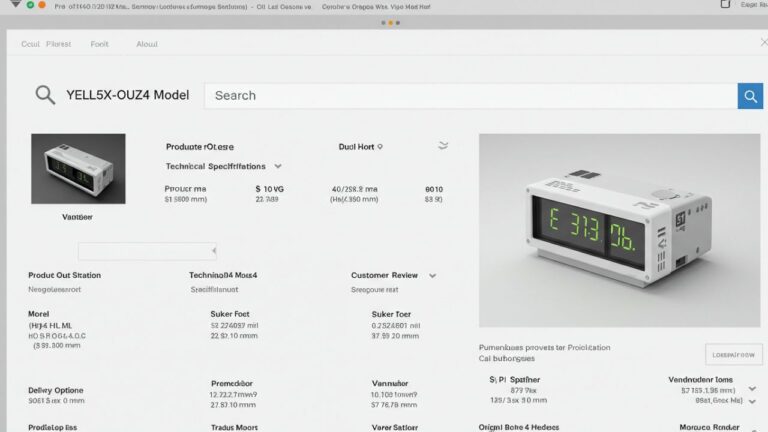
Clinchers for Essays
Writers often struggle with crafting powerful endings. That’s where clinchers for essays come into play. A strong clincher ties everything together, reinforcing your key message. It helps the reader leave with a lasting impression of your essay. If you want your writing to be truly impactful, the conclusion must resonate deeply.
As with introductions, conclusions play a critical role in shaping the reader’s final thoughts. Therefore, a carefully written clincher transforms a good essay into a memorable one. Furthermore, clinchers influence the reader’s emotional response and analytical reflection. This guide covers everything you need to know about crafting the perfect essay clincher.
You’ll learn how to choose the right words, avoid common mistakes, and apply proven techniques. Additionally, we’ll explore different types of clinchers, examples, and when to use them effectively. With time and practice, your essay conclusions will engage and inspire every reader.
Understanding the Purpose of a Clincher in Essay Writing
The clincher appears in the final paragraph of an essay, often concluding the closing statement. It wraps up the discussion neatly and provides resolution. Writers use clinchers to emphasize their thesis and leave readers thinking beyond the final word.
This sentence isn’t simply a summary—it’s the final stroke on a masterpiece. Besides, a strong clincher bridges your message and the audience’s takeaway. Without one, essays feel incomplete or forgettable.
So, what should you aim for? Ideally, your clincher should:
-
Reaffirm the essay’s purpose.
-
Leave a strong emotional or intellectual impact.
-
Close the loop with your introduction or hook.
-
Invite reflection or call to action.
Key Characteristics of Effective Clinchers
Effective clinchers share certain features regardless of the essay type. These features help deliver finality and purpose without sounding abrupt. Let’s explore the essential traits your clincher should possess:
-
Clarity – Don’t confuse readers. Use straightforward language with one clear point.
-
Relevance – Tie the clincher to your essay’s thesis or key theme.
-
Power – Strong words create strong impressions. Don’t shy away from emotional appeal.
-
Brevity – Keep it tight. One or two well-crafted sentences often work best.
-
Memorability – Make your last line stand out by using literary devices or bold insights.
Always align your clincher with the essay’s tone and purpose. For instance, a humorous clincher doesn’t suit a serious research essay.
Different Types of Clinchers for Essays
You can choose from several types of clinchers based on your essay’s purpose. Each one offers a unique way to connect with readers.
1. Call-to-Action Clinchers
Encourage the reader to act based on your argument. These work best in persuasive or argumentative essays.
“Let’s begin changing our habits today before the climate decides for us tomorrow.”
2. Quotation Clinchers
Using a famous quote that echoes your message creates a sense of authority and resonance.
“As Martin Luther King Jr. once said, ‘Injustice anywhere is a threat to justice everywhere.’”
3. Circular Clinchers
Refer back to your introduction to create full-circle closure. This offers a satisfying conclusion to the journey.
“Just like the compass always points north, our decisions should always follow ethical directions.”
4. Reflective Clinchers
Invite readers to reflect on the topic beyond the essay. Ideal for personal or narrative essays.
“Though the path was winding, every step taught me more than any destination could offer.”
5. Thought-Provoking Questions
Leaving your reader with a question fuels curiosity and conversation.
“If we have the tools to fix this, why aren’t we using them?”
Best Practices When Writing Clinchers for Essays
Now that you understand the types, let’s explore tips for writing the best clincher possible:
-
Start writing your conclusion before crafting the clincher.
-
Revisit your thesis and decide how you want readers to feel.
-
Choose your tone carefully—match your essay’s emotional pitch.
-
Don’t introduce new ideas in your clincher.
-
Use figurative language when appropriate—metaphors often make a clincher unforgettable.
Remember to read your entire essay aloud before finalizing the clincher. It must flow naturally from the previous paragraph.
Examples of Clinchers Based on Essay Types
Below are examples of clinchers based on different essay types. These can guide you in writing your own.
1. Narrative Essay Clincher
“And though the waves crashed harder than I imagined, I learned that strength lies in surrendering to the tide.”
2. Expository Essay Clincher
“Understanding the water cycle isn’t just science—it’s a reminder that nature works in elegant, purposeful loops.”
3. Persuasive Essay Clincher
“If we fail to act now, we trade progress for regret—and the cost may be too great to bear.”
4. Analytical Essay Clincher
“Ultimately, the protagonist’s journey reveals more about society’s flaws than his own failures.”
5. Compare and Contrast Essay Clincher
“While the two leaders governed differently, their legacies share the same foundation—unwavering belief in their people.”
Clinchers to Avoid: What Not to Write
Not all clinchers leave good impressions. Some may weaken your conclusion or feel cliché. Avoid the following:
-
Overused phrases: “In conclusion,” or “That’s why I believe…”
-
New arguments: Don’t add new evidence or ideas.
-
Vague generalizations: Stay specific and intentional.
-
Apologies: Never end with “I may be wrong, but…”—it weakens your position.
-
Unnecessary complexity: Keep it simple and impactful.
Choose your words with care. Readers remember your final words more than your first ones.
How to Teach Students About Clinchers
Teachers must stress the importance of a strong conclusion. Here’s a teaching plan that works for middle and high school students:
-
Explain the role of clinchers using relatable examples.
-
Analyze sample essays and identify strong vs. weak clinchers.
-
Practice writing different types of clinchers from given prompts.
-
Pair students to critique each other’s endings.
-
Challenge them to write short essays ending with their best clincher.
Over time, students will see their writing improve through stronger conclusions.
How Clinchers Impact Grading and Reader Experience
A great clincher can improve your essay grade, especially in standardized tests or academic submissions. Examiners look for cohesion, clarity, and closure. A weak ending signals that the writer lost momentum or confidence.
On the other hand, strong clinchers often stick with readers long after they’ve closed the essay. Whether you write for school, work, or publishing, a memorable ending proves your writing maturity.
Moreover, effective clinchers elevate emotional impact. They can inspire, anger, comfort, or even persuade readers—depending on how skillfully you write them.
Common Mistakes in Writing Clinchers
Writers often repeat their thesis without adding value in the final line. This makes the ending dull. Also, many writers end abruptly without a clincher, leaving thoughts hanging.
Here are mistakes to avoid:
-
Copy-pasting your introduction into your conclusion.
-
Using filler words or phrases that don’t add value.
-
Writing overly complex sentences that confuse readers.
-
Ending on a weak, unemotional note.
-
Trying to sound poetic without purpose.
Avoid these pitfalls by reading strong essay samples and revising your own clinchers with a critical eye.
Using Technology to Improve Your Clincher Writing
You can use online writing tools to enhance your clinchers. Tools like Grammarly, Hemingway Editor, and Quillbot help refine your sentences for tone and clarity. These tools highlight run-on sentences, weak vocabulary, or passive construction.
Additionally, AI writing assistants help brainstorm clincher ideas when you’re stuck. Although you must write the final sentence yourself, these tools provide useful starting points.
Moreover, writing communities like Scribophile or Reddit’s /r/essay help you receive feedback from other writers.
How Clinchers Influence Essay Contest Outcomes
In writing competitions, judges read dozens of essays. A powerful clincher helps yours stand out. It shows confidence, mastery, and intention.
For instance, if your essay explores mental health awareness, an emotionally resonant clincher shows deep empathy and thoughtfulness. That could sway judges more than technical perfection.
Therefore, focus on the ending as much as the introduction. A powerful clincher might be the deciding factor between winning or losing.
FAQ: Clinchers for Essays
1. What is a clincher in an essay?
A clincher is the final sentence in your conclusion. It reinforces your thesis and leaves a lasting impression.
2. Should every essay include a clincher?
Yes. A strong ending improves clarity, impact, and cohesion across all essay types.
3. Can I use quotes as clinchers?
Absolutely. Quotes make powerful clinchers when they align perfectly with your essay’s message.
4. How long should a clincher be?
Keep it concise. One to two impactful sentences work best for clarity and memorability.
5. What’s the best type of clincher for persuasive essays?
A call-to-action works best. It urges the reader to take the next step after reading.
6. How can I practice writing clinchers?
Write multiple versions of your essay’s ending. Read them aloud and pick the most impactful one.
Final Remarks: Leave Readers with Lasting Impact Using Strong Clinchers
Clinchers for essays complete the narrative. They tie your points together, echo your thesis, and compel the reader to remember your message. Writing a strong clincher may seem minor, but it greatly influences how your essay lands.
Remember to practice, experiment, and revise. Try different types of clinchers and align them with your essay’s tone. With time, you’ll master the art of memorable endings.
A well-crafted clincher transforms a good essay into a remarkable one. So, take the final sentence seriously—it might just be the most powerful line you write.







